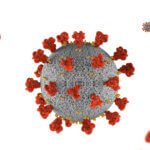Antimicrobial resistance (AMR) is a growing public health concern that requires the continued development of new antibiotics. As bacteria become more resistant, it becomes increasingly difficult to treat infections leaving patients with untreatable illnesses. Developing new antibiotics is a thorough process with several stages of testing and MIC determination is important for analyzing their effectiveness. MIC determination provides invaluable insights into how the new compounds affect the pathogens thus guiding future antibiotic therapy. This article explores the concept and importance of MIC determination in advancing antibiotic development.
Minimum Inhibitory Concentration (MIC)
Minimum Inhibitory Concentration (MIC) is the minimum concentration of an antibiotic required to inhibit the visible growth of a microorganism after incubation under predetermined conditions. Its main aim is to guide researchers, health workers, and healthcare professionals in the determination of the effectiveness of a specific kind of drug against specific strains of bacteria.
MIC values help the clinician in choosing appropriate antibiotics that will adequately restrict bacterial growth in the patient’s body during treatment.
MIC determination in antibiotic development
Determination of MIC acts as a foundational step in antibiotic research and development. This helps the researcher to come up with the most appropriate concentration of antimicrobial agents against a given pathogen. It is relevant for the progression of compounds towards becoming a drug candidate.
At the earlier stages of antibiotic development, MIC determination facilitates screening the libraries of possible compounds. This way, the researchers rapidly check a variety of different compounds against a panel of bacterial strains to give priority to those compounds showing low MIC values which ensure efficacy at low concentrations.
The MIC test helps to decide the best dose during the efficacy evaluation of new antibiotics. After knowing the potency of the drug candidates against different bacterial species and strains, MIC helps in choosing the suitable therapeutic range with minimum side effects and maximal therapeutic effects.
Detecting resistance
The principal key challenge of healthcare is the emergence of antibiotic resistance. It is MIC testing that helps to reveal the resistant bacterial strains.
MIC determination helps researchers and clinicians to detect emerging patterns of resistance and can be warned of this fact in case the treatment has to be altered or new antibiotics need to be developed. Thus MIC can be an important surveillance tool to check the spread of resistant pathogens and for informing infection control strategies.
Customizing patient care
In addition to antibiotic development, It is also evident that MIC values are useful in personalized medicine, where the treatment to be administered is based on an individual’s specific needs. If patients report to the facility with an infection, the microbiology laboratory will conduct tests to determine the MIC value of the drugs to ascertain the most ideal antibiotic to administer for that particular infection. This approach keeps the use of broad-spectrum antibiotics at a minimum thus reducing the risk of resistance development and side effects for the patient.
Challenges in MIC testing
- Standardization of protocols – The MIC test is a very powerful tool but some inconsistencies can arise due to differences in testing methods, bacterial inoculum size, and incubation conditions. These factors can affect MIC values leading to potential variations in results across different laboratories. This makes standardization efforts an issue of great importance to assure consistency and comparability of the data.
- Difficulty with fastidious organisms – Some bacteria, particularly the fastidious one, can be challenging to culture thus making MIC determination difficult. Specialized media or conditions may be required for accurate results. The development of standardized guidelines for testing such organisms is essential for obtaining reliable MIC data.
- Interpretation of results – Interpretation of the MIC results should be done with consideration of the pharmacokinetic, pharmacodynamic, and clinical breakpoints. The clinical breakpoints are some particular MIC values that will categorize the bacteria into sensitive, intermediately sensitive, or resistant. The same must be agreed upon through collaboration between microbiologists, pharmacologists, and clinicians.
New antibiotic development is the most crucial thing in the fight against antimicrobial resistance. MIC determination will remain central to this effort as it will continue to allow researchers to identify the most promising compounds, develop efficient dosages, and permit them to monitor resistance patterns against their effective dosages. MIC testing remains an invaluable tool in antibiotic development and clinical practice despite having challenges in standardization and interpretation of results. This would, therefore, demonstrate that with continued improvement in testing methodologies and the best of interdisciplinary collaborations, researchers will make the best use of MIC testing as a guide for the development of the next generation of antibiotics for public health protection over the years.
At Microbe Investigations, we offer comprehensive antimicrobial testing services to assess the efficacy of compounds and everyday products formulated for antimicrobial protection. Our team of researchers and microbiologists possesses deep expertise in designing and conducting test procedures, as well as interpreting microbiological data and reports.
Our goal is to support clients in achieving continuous improvement and innovation in developing solutions that enhance well-being through our microbiology testing services.
If you have any questions about MIC tests or other antimicrobial testing services, feel free to consult our experts.









